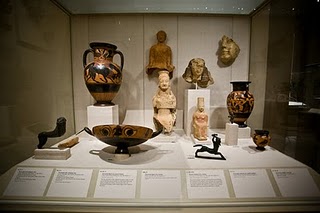 New times arrived. But alongside the flowering of humanism and the Renaissance, a grave moral and spiritual crisis shook the Church. Alas, the changes were accompanied by violence and destruction of extreme brutality, owing to the iconoclastic fury of the Protestants.
New times arrived. But alongside the flowering of humanism and the Renaissance, a grave moral and spiritual crisis shook the Church. Alas, the changes were accompanied by violence and destruction of extreme brutality, owing to the iconoclastic fury of the Protestants. Indeed, the adherents of Church reform condemned holy images, basing themselves on Biblical prohibitions:
“Thou shalt not make unto thee any graven image, or any likeness of any thing that is in heaven above, or that is in the earth beneath, or that is in the water under the earth: thou shalt not bow down thyself to them, nor serve them”
In its materiality the image is deceiving; the danger exists that the true believer may venerate the image itself more than what it represents. The image, by its power of seduction, may lead the senses astray instead of inciting to prayer. By its excessive cost, the image encourages the egoistic pride of rich donors and not their charitable duty towards the most deprived; God must be served through his poor rather than by vain expenditure on sculptures and paintings of excessive proliferation. Those were some of the arguments set forth, with variations, by all the leaders of the Reformation in their works, their sermons or their pamphlets. Luther was relatively moderate, insisting on the educative role of narrative subjects while denouncing temptations to idolatry and the squandering of money. Thus he blamed Carlstadt’s iconoclastic zeal at
As the ideas of the Reformation, mingled with material and social demands, made headway in Europe, the manifestations of iconoclasm multiplied in diverse forms: sporadic outbreaks or intense explosions like that in the Netherlands during the year s66; spontaneous acts of handfuls of individuals driven by poverty and religious fanaticism, or movements orchestrated by civic authorities won over to the new doctrines. Thus at Strasbourg beginning in 1524, under the auspices of the town council, paintings, crucifixes, altarpieces and other images began to be removed from religious buildings and systematically destroyed or sometimes carefully dismantled. Inevitably, in many towns, sculptors in want of commissions were reduced to expatriating themselves or to begging for living allowances, and often ended up in poverty. The printing press played a considerable role in the spread of the Reformers’ doctrines, in particular those of Luther and Calvin. And preachers everywhere carried on the most active propaganda, for example thundering against the scandalous figures of female saints adorned more luxuriously than prostitutes, a veritable incitement to voluptuousness and not to pious thoughts.
At Steenvoorde in
Thousands of sculptures accordingly perished in the agonies of the Bildersturm, annihilated in the flames of pyres and beneath the blows of pickaxes or irreparably mutilated. Works fallen forever into oblivion or illustrious works of which surviving records preserve the memory, sharpening our regret at their loss, such as the altarpiece by Nicholas of Leyden on the high altar of the cathedral of Constance destroyed during the Zwinglian iconoclasm, or the altarpiece by Michael Erhart and Jorg Syrlin the Elder in the cathedral of Ulm, torn down by the Lutherans.
Other agonies, military or revolutionary, later contributed, it is true, to the disappearance of many medieval images. And this is not to forget changes in taste and the desire to renovate or purify church decoration, largely responsible for multiple destructions of Gothic altarpieces, stalls, rood screens and choir screens. If the reforming iconoclasm banned religions art, the Church of the Counter-Reformation, which defended it, wanted itto be above reprdach and called for austerity and decency.
“The Middle Ages ended on the day the Church itself condemned them,” wrote Emile Male, deploring the death of medieval iconographic traditions after the Council of Trent (1545—i563). But we also know that in spite of everything the Middle Ages remained strongly present, as Henri Focillon affirms: “They have not disappeared, they have not been wiped out. It would seem the West is nostalgic for them. The nostalgia became a conscious longing in
















